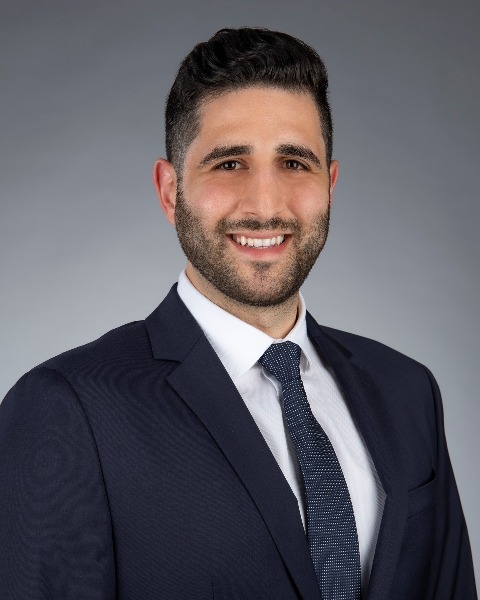Back
Poster Session C - Monday Afternoon
C0219 - A Retrospective Study on the Geographic Trends of Eosinophilic Esophagitis (EoE) in the United States
Monday, October 24, 2022
3:00 PM – 5:00 PM ET
Location: Crown Ballroom

Fadi J. Totah, DO
HCA Healthcare, Riverside Community Hospital
Riverside, CA
Presenting Author(s)
Fadi Totah, DO1, Scott Kubomoto, MD1, Carol Monis, MD1, Mahesh Botejue, MD1, Eric Choi, MD2
1HCA Healthcare, Riverside Community Hospital, Riverside, CA; 2University of California, Riverside, Altais Medical Group, Riverside, CA
Introduction: Up until a couple of decades ago, eosinophilic esophagitis in adults (EoE) was considered uncommon, but its incidence has increased dramatically in recent decades (de Rooj WE 2021). In this retrospective study, we compare the number of cases of EoE across various regions in the United states and aim to identify regional trends.
Methods: We performed a retrospective cross-sectional study of adults presenting to the ED and/or admitted to the hospital with eosinophilic esophagitis from 2016 through 2021 at 185 HCA hospitals across the United States. A total of 5,283 unique patients were included in the study. The inclusion criteria were all patients ages 18 years and older with a diagnosis of eosinophilic esophagitis. Patients with visit problems suggestive of other known cause of dysphagia such esophageal cancer, candida esophagitis, immunocompromised, were excluded.
Results: The mean age of patients was 46 years. 17.8% of EOE encounters involved food impaction, and 14.9% of patients had a diagnosis of asthma. Our data revealed a statistically significant difference in EoE encounters based on year. There was an increase in the percent of patients seen for EOE each year from 2016-2021 (p=0.025). East North Central (ENC) region had the greatest number of EoE cases per 100,000 patients for each given year (Figure 1 A). ENC, had a dramatic increase in encounters from 2016 (21.08/100,000 patients) to reaching its peak in 2017 (47.23/100,000 patients). The West South-Central region had the least amount of EoE encounters for each given year (Figure 1 A). There was no statistically significant seasonal difference in encounter frequency.
Discussion: The geographical data of EoE cases, reveal an overwhelming rate of EoE cases in the East North Central region of the United States. Our study demonstrated significant regional variations within the United States for hospitalizations and ED visits for EoE patients. Given the association of EoE and allergic diseases, further investigation could include comparing our findings with regional rates of encounters for asthma and allergies.
Reference:
de Rooij WE, Barendsen ME, Warners MJ, et al. Emerging incidence trends of eosinophilic esophagitis over 25 years: Results of a nationwide register-based pathology cohort. Neurogastroenterol Motil. 2021;33(7):e14072. doi:10.1111/nmo.14072

Disclosures:
Fadi Totah, DO1, Scott Kubomoto, MD1, Carol Monis, MD1, Mahesh Botejue, MD1, Eric Choi, MD2. C0219 - A Retrospective Study on the Geographic Trends of Eosinophilic Esophagitis (EoE) in the United States, ACG 2022 Annual Scientific Meeting Abstracts. Charlotte, NC: American College of Gastroenterology.
1HCA Healthcare, Riverside Community Hospital, Riverside, CA; 2University of California, Riverside, Altais Medical Group, Riverside, CA
Introduction: Up until a couple of decades ago, eosinophilic esophagitis in adults (EoE) was considered uncommon, but its incidence has increased dramatically in recent decades (de Rooj WE 2021). In this retrospective study, we compare the number of cases of EoE across various regions in the United states and aim to identify regional trends.
Methods: We performed a retrospective cross-sectional study of adults presenting to the ED and/or admitted to the hospital with eosinophilic esophagitis from 2016 through 2021 at 185 HCA hospitals across the United States. A total of 5,283 unique patients were included in the study. The inclusion criteria were all patients ages 18 years and older with a diagnosis of eosinophilic esophagitis. Patients with visit problems suggestive of other known cause of dysphagia such esophageal cancer, candida esophagitis, immunocompromised, were excluded.
Results: The mean age of patients was 46 years. 17.8% of EOE encounters involved food impaction, and 14.9% of patients had a diagnosis of asthma. Our data revealed a statistically significant difference in EoE encounters based on year. There was an increase in the percent of patients seen for EOE each year from 2016-2021 (p=0.025). East North Central (ENC) region had the greatest number of EoE cases per 100,000 patients for each given year (Figure 1 A). ENC, had a dramatic increase in encounters from 2016 (21.08/100,000 patients) to reaching its peak in 2017 (47.23/100,000 patients). The West South-Central region had the least amount of EoE encounters for each given year (Figure 1 A). There was no statistically significant seasonal difference in encounter frequency.
Discussion: The geographical data of EoE cases, reveal an overwhelming rate of EoE cases in the East North Central region of the United States. Our study demonstrated significant regional variations within the United States for hospitalizations and ED visits for EoE patients. Given the association of EoE and allergic diseases, further investigation could include comparing our findings with regional rates of encounters for asthma and allergies.
Reference:
de Rooij WE, Barendsen ME, Warners MJ, et al. Emerging incidence trends of eosinophilic esophagitis over 25 years: Results of a nationwide register-based pathology cohort. Neurogastroenterol Motil. 2021;33(7):e14072. doi:10.1111/nmo.14072

Figure: Figure 1: A) EoE Encounters per 100,000 patients by year and region B) Prevalence of EoE by quarter and region
Disclosures:
Fadi Totah indicated no relevant financial relationships.
Scott Kubomoto indicated no relevant financial relationships.
Carol Monis indicated no relevant financial relationships.
Mahesh Botejue indicated no relevant financial relationships.
Eric Choi indicated no relevant financial relationships.
Fadi Totah, DO1, Scott Kubomoto, MD1, Carol Monis, MD1, Mahesh Botejue, MD1, Eric Choi, MD2. C0219 - A Retrospective Study on the Geographic Trends of Eosinophilic Esophagitis (EoE) in the United States, ACG 2022 Annual Scientific Meeting Abstracts. Charlotte, NC: American College of Gastroenterology.
